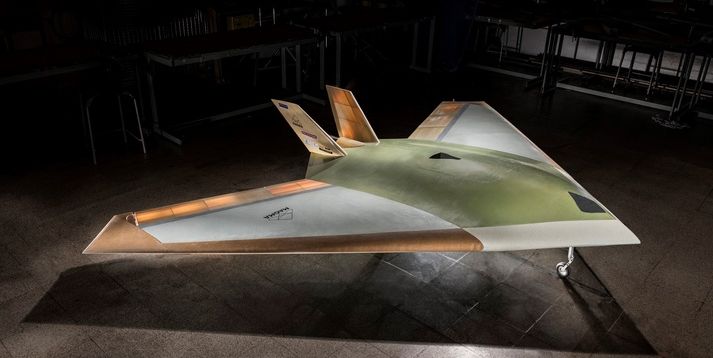New Stealth Drone Has No Moving Surfaces at All
The result is a lighter, simpler, stealthier airplane harder for radar to detect.
BAE Systems has unveiled a new aircraft design that could be a major advance in stealth technology. The new MAGMA drone does away with aircraft control surfaces, resulting in an aircraft whose shape remains constant throughout its entire flight. The small demonstration aircraft, which has completed a successful first flight, uses blown air to change direction instead of complex mechanical controls.
Most airplanes look unmoving in flight, like a wing hanging off a giant tube plowing through the sky. Look more closely however and you’ll see smaller parts of the airplane frequently moving to control the direction of the aircraft. Conventional aircraft use a system of elevators, rudders, and ailerons to control their direction in the pitch, (up and down) yaw (left to right), and roll directions. These mechanical devices are usually in the shape of control surfaces attached to the rear of the wing, horizontal, and vertical stabilizers and are controlled by the pilot—or sometimes an onboard flight computer.
Control surfaces have been an instrumental part of aircraft since the early 20th century. They’re large and heavy, and require a fairly complicated mechanism to move them in mid-flight. These mechanisms can and do fail, limiting an airplane’s maneuverability, sometimes with tragic consequences. Among the new generation stealth warplanes such as the B-2 Spirit, F-22 Raptor, and F-35 Joint Strike Fighter, control surfaces can also affect an airplane’s carefully shaped stealth profile, as the fin-like device moves upward or downward, momentarily making the aircraft slightly more visible to radar.
MAGMA’s innovations could be a fix to both the problem of mechanical complexity and stealth, and accomplishes this by doing away with elevators, rudders, and ailerons in exchange for a system redirected air from the engine and air blowers. The first process, known as wing circulation control, redirects air from the engine moving at supersonic speeds and blows it through the trailing edge of the wing. The second process, known as fluidic thrust vectoring, uses air blowers to change the direction of the aircraft’s exhaust.
Combined, both processes allow the pilot to control the direction of the aircraft merely by manipulating the air around it. The elimination of hydraulic controls, replaced with air redirecting ducts and air blowers, will make aircraft with this technology cheaper, easier to maintain, and safer. MAGMA also helps keep the plane stealthy. A pilot or drone operator can change directions without fear that doing so makes his or her plane more visible to radar.
MAGMA’s technology is impressive enough to nearly break out the “R” word: revolutionary. That having been said, the tech is limited to a single pilotless drone that has completed a single flight. If the tech is everything BAE Systems claims, the benefits are so potentially so great it should be rapidly implemented on new aircraft designs. Mechanical aircraft controls might have had a good one hundred year run, but maybe it’s time for blown air to finally take over.



No comments:
Post a Comment